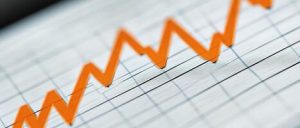Key Economic Indicators
The Economic Roadmap: The Importance of Economic Indicators
In the complex and dynamic world of economics, economic indicators act as a compass, providing a clear path to understanding the economic conditions of a country and the world. These indicators offer vital information to policymakers, investors, analysts, and the general public, enabling them to make informed and measured decisions on economic matters.
Economic indicators are broadly classified into two categories: leading and lagging. Leading indicators, akin to traffic lights, offer a glimpse into the future of the economy. They predict upcoming changes in the economy, aiding investors and policymakers in their decision-making. Examples of leading indicators include the Purchasing Managers’ Index (PMI), Consumer Confidence Index, and Durable Goods Orders Index.
In contrast, lagging indicators function as a rear-view mirror, reflecting the current state of the economy. These indicators reveal past economic performance, helping analysts better understand the economic landscape. Gross Domestic Product (GDP), unemployment rate, inflation rate, and Consumer Price Index (CPI) are examples of lagging indicators.

This article aims to introduce and examine key economic indicators, both leading and lagging. We will define each indicator, explain its function, and interpret its implications. Additionally, we will provide examples of important indicators in each category and explore their applications.
Join us on this journey into the world of economic indicators, opening a new window to a better understanding of the economic conditions of our country and the world.
Important Leading Indicators in Financial Markets
Leading indicators, like fortune-tellers, examine economic data to paint a picture of the future of financial markets. These indicators are valuable tools for traders and investors, allowing them to anticipate future trends and make more profitable trades with reduced risk.
Let’s delve into some of the key leading indicators in financial markets:
-
Purchasing Managers’ Index (PMI): The PMI is a leading economic indicator that gauges the current and future economic activity in the manufacturing and service sectors based on a survey of purchasing managers at companies. This index is published monthly and ranges from 0 to 100.
-
Definition: This index examines economic conditions in various sectors (industrial, service, construction).
-
Function: The PMI is derived from surveying company managers about their current situation and future outlook.
-
English Symbol: Purchasing Managers’ Index (PMI)
-
Application:
- PMI above 50: Indicates economic growth in that sector.
- PMI below 50: Indicates economic contraction in that sector.
-
-
Consumer Confidence Index (CCI): The CCI is a leading economic indicator that reflects how optimistic consumers are about the current and future state of the economy. This index is published monthly and ranges from 0 to 100.
-
Definition: This index examines the level of optimism or pessimism among consumers regarding the future economic situation.
-
Function: The CCI is derived from surveying consumers about their expectations for the economic situation, unemployment rate, and inflation in the future.
-
English Symbol: Consumer Confidence Index (CCI)
-
Application:
- CCI above 100: Indicates consumer optimism and the likelihood of increased demand.
- CCI below 100: Indicates consumer pessimism and the likelihood of decreased demand.
-
-
Case-Shiller Home Price Index: The U.S. Home Price Index, also known as the Case-Shiller Home Price Index, is an economic indicator that measures changes in house prices in 20 major U.S. cities. This index is published by S&P Dow Jones Indices and Robert Shiller, a Nobel Prize-winning economist.
-
Definition: This index examines changes in house prices over a specific period.
-
Function: The Home Price Index is derived by collecting data on home sale prices.
-
English Symbol: Case-Shiller Home Price Index
-
Application:
- Rising house prices: Indicate economic boom and increased demand for housing.
- Falling house prices: Indicate economic recession and decreased demand for housing.
-
-
Interest Rate Index: The Interest Rate Index generally refers to the average interest rate that banks apply to deposits and loans. This index can be published separately for short-term (e.g., overnight interest rate) and long-term (e.g., 10-year bond rate) rates.
-
Definition: This index examines changes in interest rates set by central banks.
-
Function: Interest rates, as the cost of borrowing money, are determined by central banks.
-
English Symbol: Interest Rate
-
Application:
- Rising interest rates: Indicate efforts to control inflation and reduce demand.
- Falling interest rates: Indicate efforts to stimulate economic growth and increase demand.
-
Important Lagging Indicators in Financial Markets
Lagging indicators act as a mirror, reflecting the current state of the economy. These indicators provide information about past economic performance, helping traders and investors gain a better understanding of the current situation and make more informed decisions for their trades.
Let’s explore some of the key lagging indicators in financial markets:
-
Gross Domestic Product (GDP): GDP, which stands for Gross Domestic Product, refers to the total value of all final goods and services produced within a country during a specific period (usually a year). GDP is considered a key indicator for measuring the economic health of a country.
-
Definition: This indicator refers to the total value of all final goods and services produced within a country during a specific period (usually a year).
-
Function: GDP is derived by collecting data on production in various sectors of the economy.
-
English Symbol: Gross Domestic Product (GDP)
-
Application:
- GDP growth: Indicates economic boom.
- GDP decline: Indicates economic recession.
-
-
Unemployment Rate: The unemployment rate represents the percentage of the active population in a country (usually between 15 and 64 years old) who are currently unemployed but actively seeking employment. The unemployment rate is considered a key indicator for measuring the economic health of a country.
-
Definition: This indicator refers to the percentage of the active working-age population who are unemployed.
-
Function: The unemployment rate is derived by collecting data on employed and unemployed individuals.
-
English Symbol: Unemployment Rate
-
Application:
- Low unemployment rate: Indicates economic boom and demand for labor.
- High unemployment rate: Indicates economic recession and lack of demand for labor.
- Example: Iran’s unemployment rate
-
-
Inflation Rate: The inflation rate refers to the increase in the general price level over a specific period (usually a year). Inflation is considered a key indicator for measuring the economic stability of a country.
-
Definition: This indicator refers to the average increase in the price level of goods and services over a specific period (usually a year).
-
Function: The inflation rate is calculated using the Consumer Price Index (CPI).
-
English Symbol: Inflation Rate
-
Application:
- High inflation: Indicates decreased purchasing power of money and economic concerns.
- Low inflation: Indicates economic stability and adequate purchasing power of money.
-
-
Consumer Price Index (CPI): The CPI, which stands for Consumer Price Index, refers to the weighted average price of a basket of consumer goods and services purchased by urban households during a specific period (usually a month).
-
Definition: This index examines changes in the average price of a basket of consumer goods and services over a specific period (usually a year).
-
Function: The CPI is derived by collecting data on the prices of consumer goods and services.
-
English Symbol: Consumer Price Index (CPI)
-
Application:
- Increase in CPI: Indicates rising inflation and decreased purchasing power of money.
- Decrease in CPI: Indicates decreasing inflation and increased purchasing power of money.
-
-
Industrial Production Index: The Industrial Production Index refers to the monthly or annual changes in the volume of production in a country’s industrial sector. This index reflects the level of economic activity in this sector and can be considered a driver of economic growth.
-
Definition: This index examines changes in the volume of production in a country’s industrial sector over a specific period (usually a month).
-
Function: The Industrial Production Index is derived by collecting data on production in various industrial sectors.
-
English Symbol: Industrial Production Index
-
Application:
- Increase in the index: Indicates economic boom in the industrial sector.
- Decrease in the index: Indicates economic recession in the industrial sector.
-
Why Are Economic Indicators Important for Propiy Traders?
In the turbulent world of financial markets, Propiy traders are like captains searching for profitable treasures in a stormy sea. Economic indicators act as guiding lights, illuminating the path to success.
Knowledge and analysis of economic indicators offer several advantages to Propiy traders:
- Deeper understanding of the market: By analyzing economic indicators, traders can gain a more accurate perspective on the current and future state of financial markets.
- Trend forecasting: By examining leading indicators, traders can predict the likelihood of economic events and their impact on the market.
- Informed decision-making: By analyzing indicators, traders can confidently and with less risk make decisions about entering and exiting trades.
- Loss reduction and profit increase: With a better understanding of economic conditions, traders can optimize their trading strategies and minimize the likelihood of losses.
By relying on the analysis of economic indicators, traders can transform into seasoned captains, navigating the challenging waters of financial markets with reduced risk and achieving their goals.
Therefore, it can be said that knowledge and analysis of economic indicators are powerful tools for Propiy traders, aiding them in traversing the challenging path of financial markets and reaching their objectives.
Join Propiy and embark on a journey towards brighter horizons in the financial markets!
We hope the ‘Key Economic Indicators’ article has shed light on this crucial aspect of the financial world. Understanding these indicators empowers you to make informed decisions and navigate the markets with confidence. If you have any further questions or would like to explore specific indicators in more depth, feel free to reach out!





The use of offensive and immoral words and content in any form and by any person is prohibited.
Publishing any non-economic views, promoting the site, promoting social network pages, including contact information and unrelated links is not allowed.
Comments that violate the above rules will not be approved.